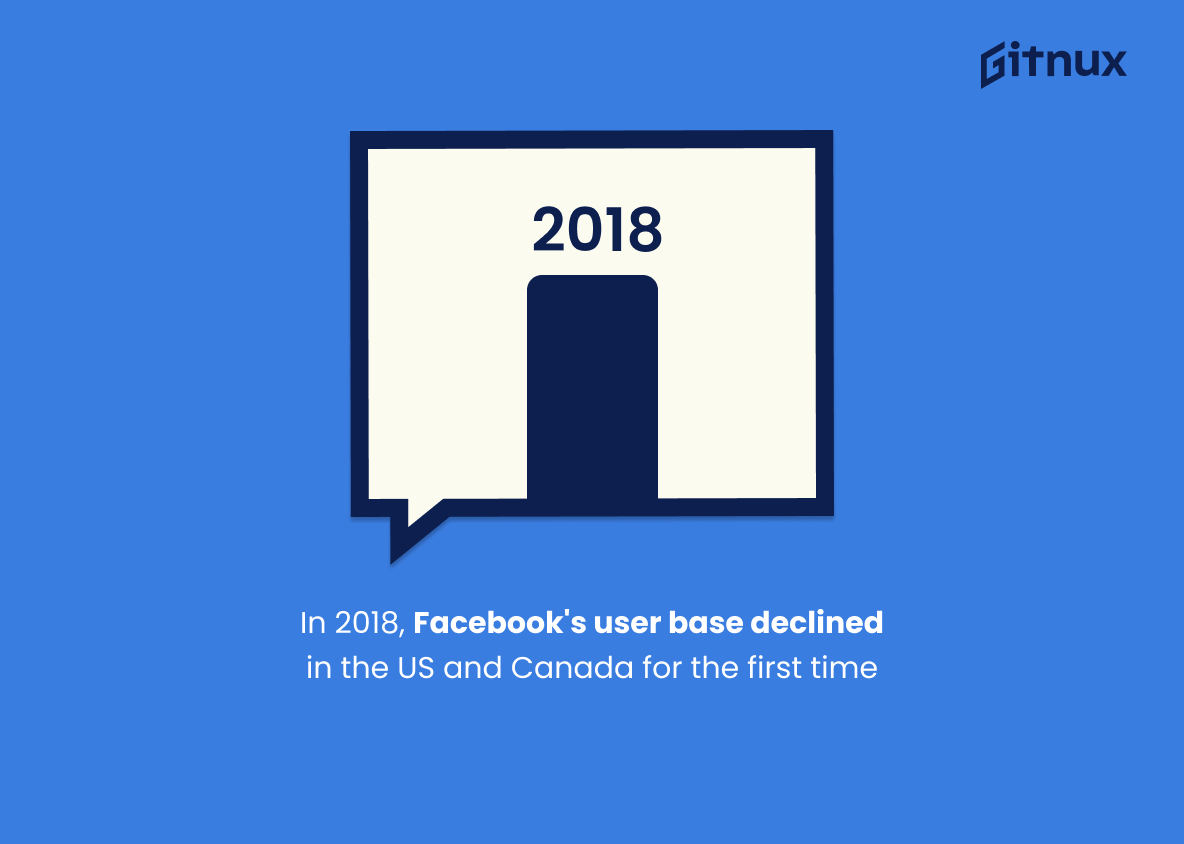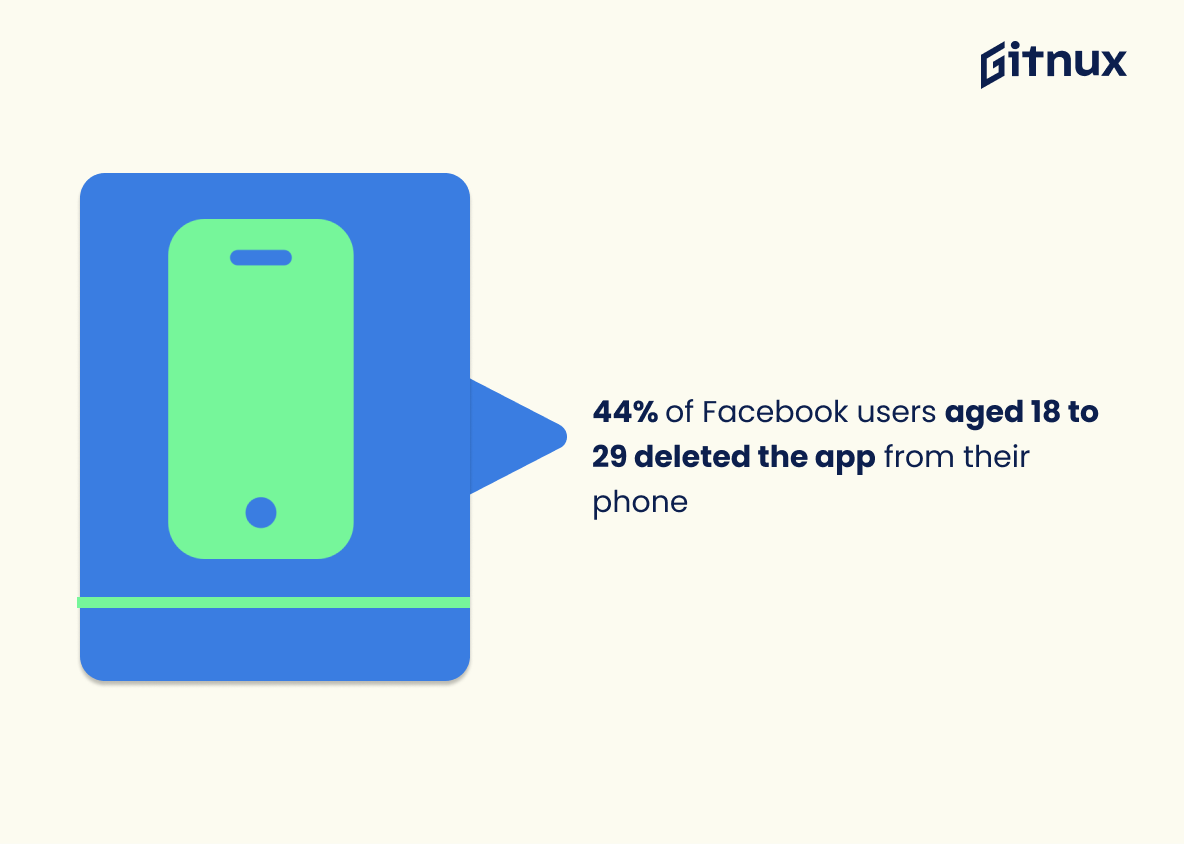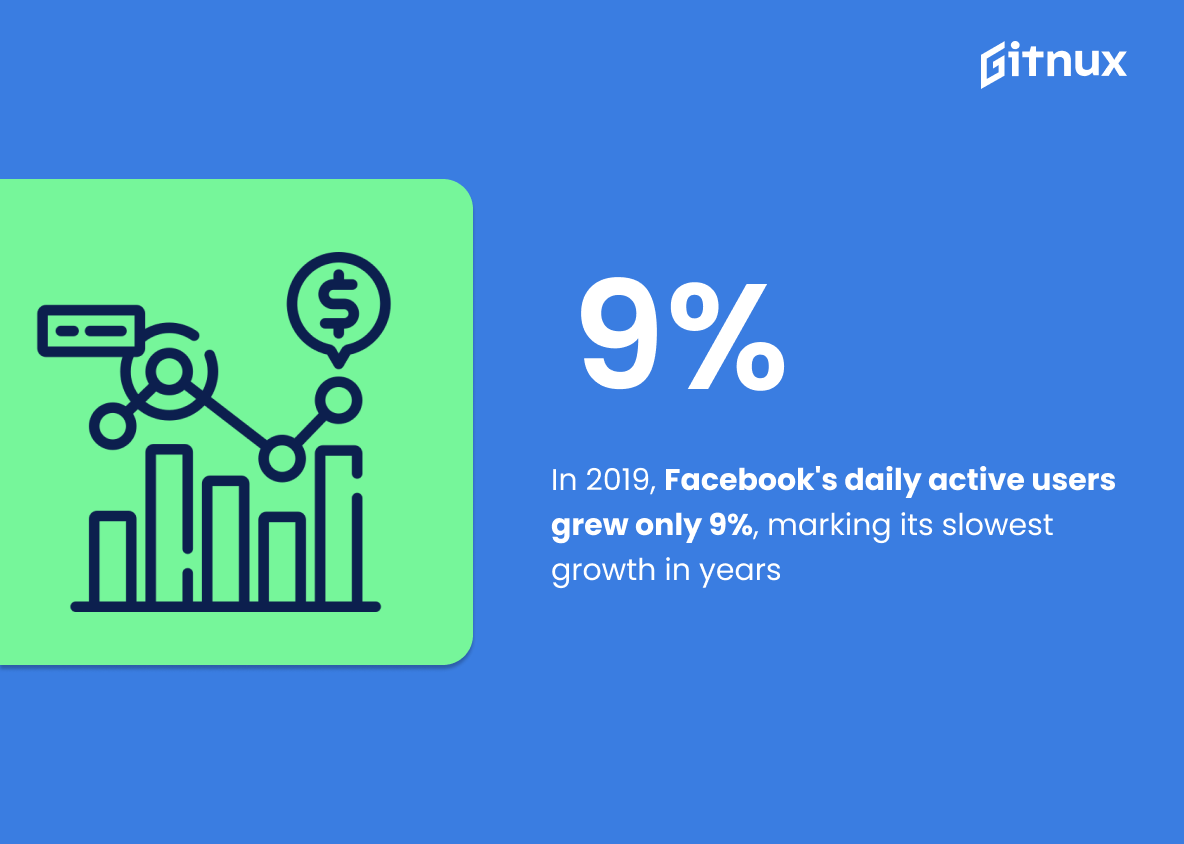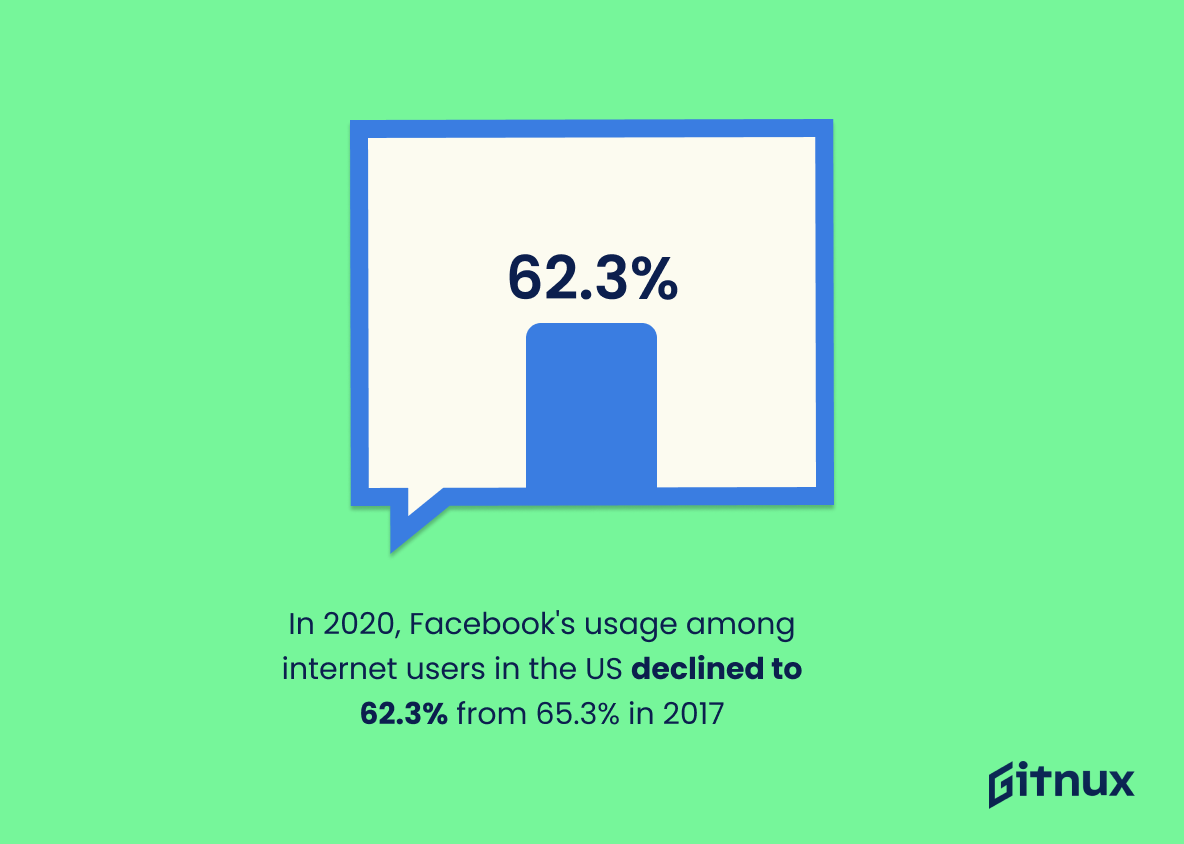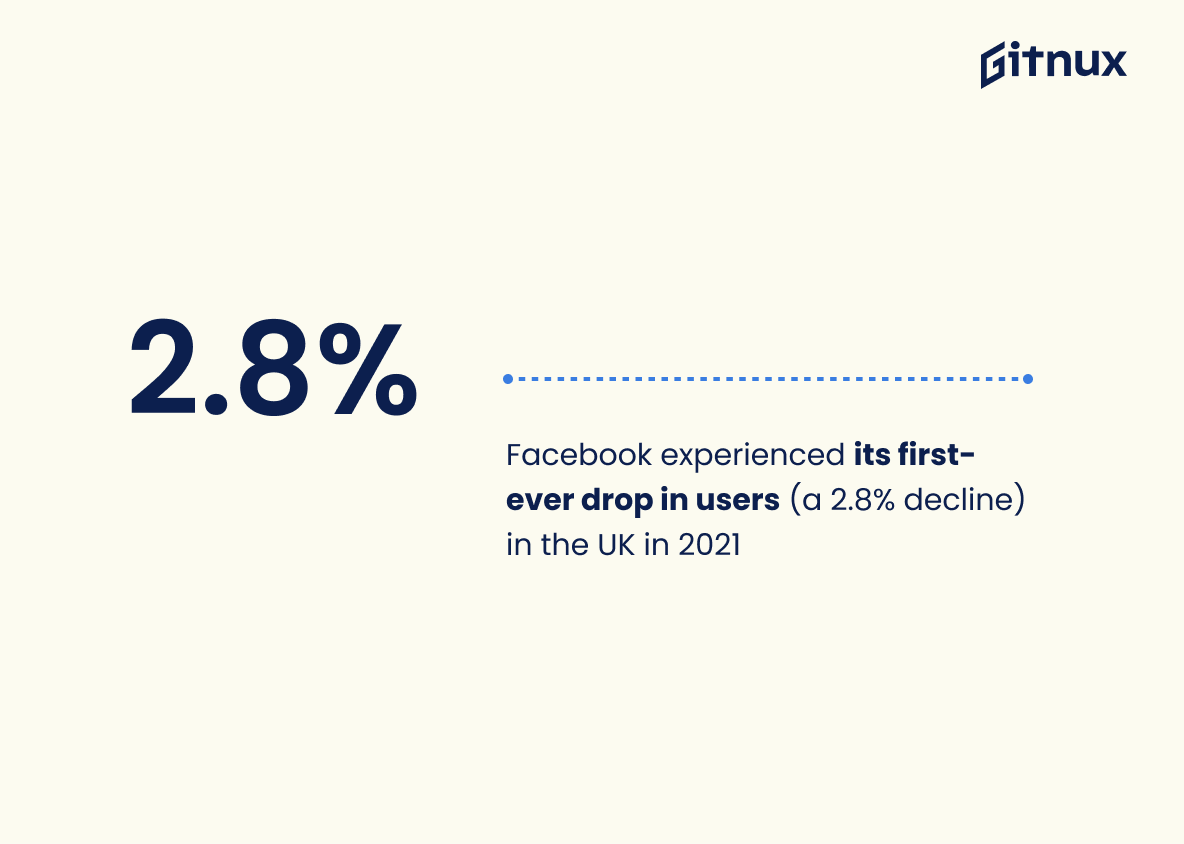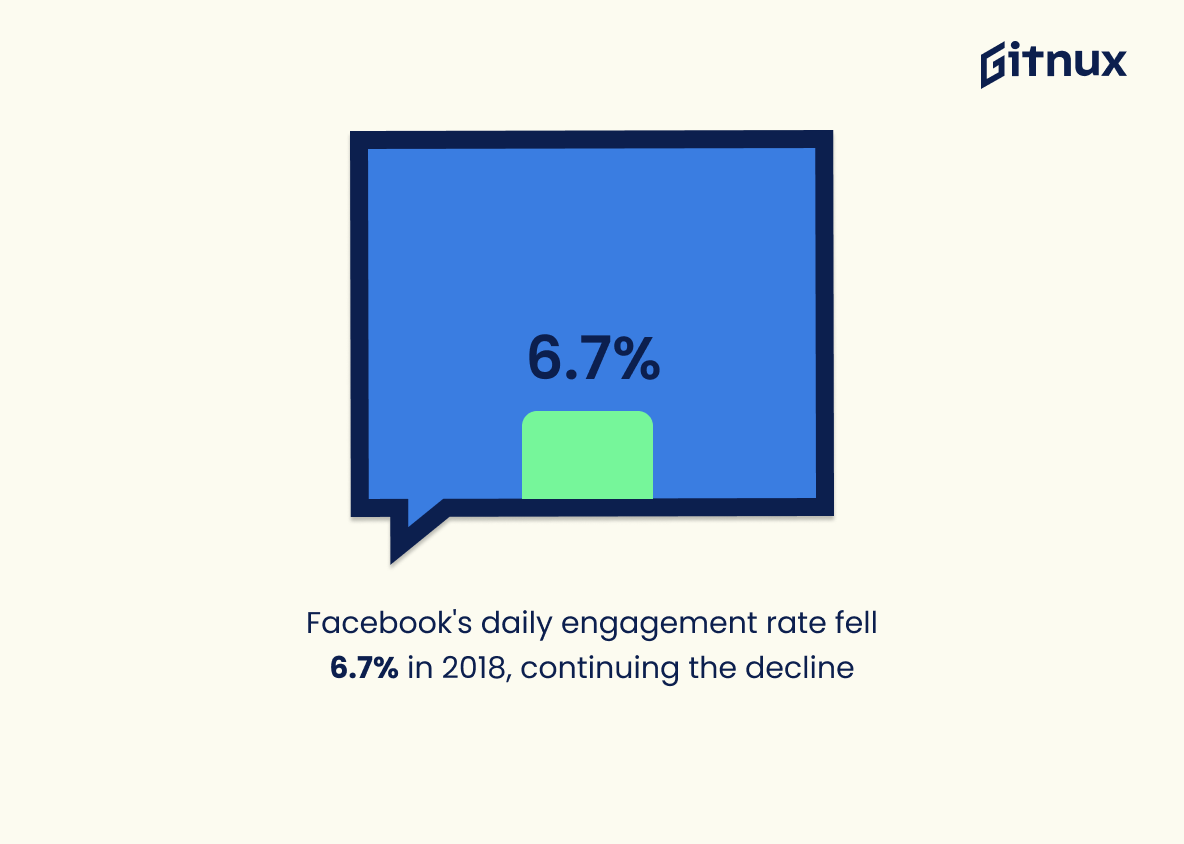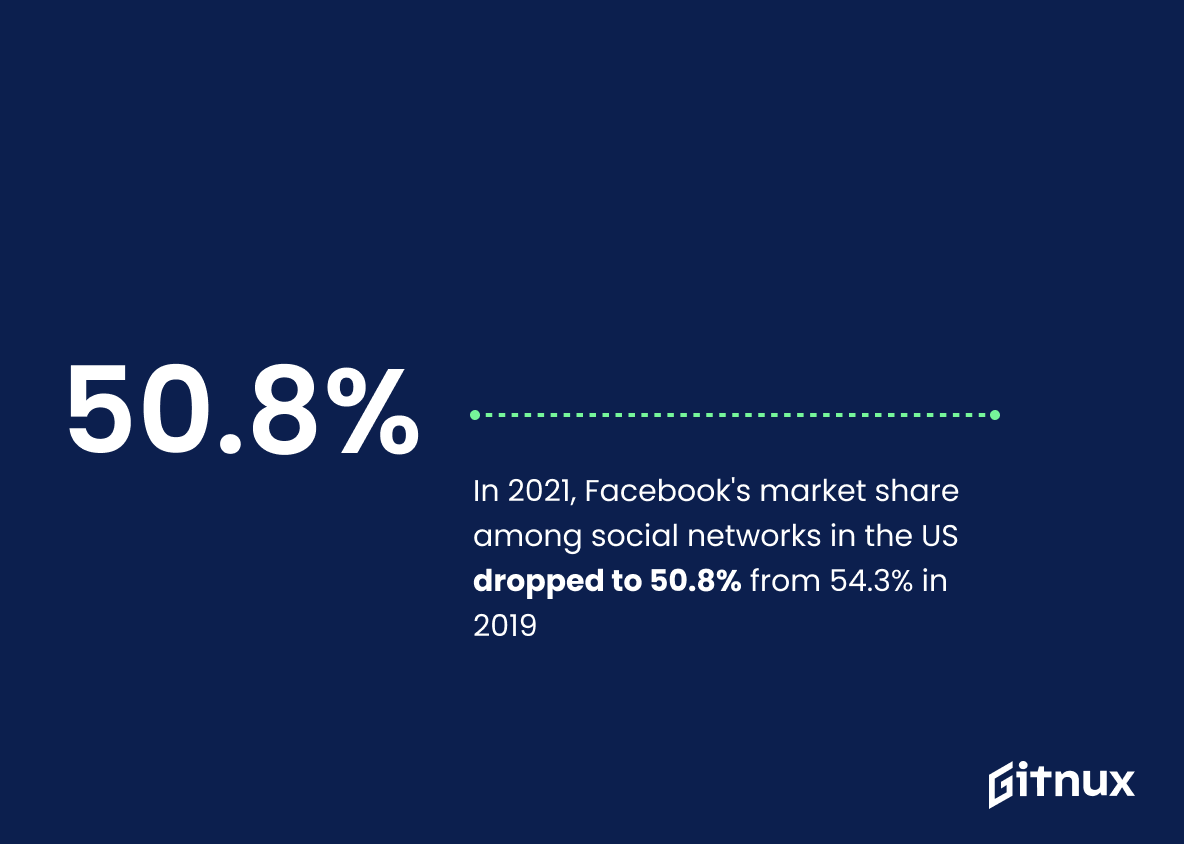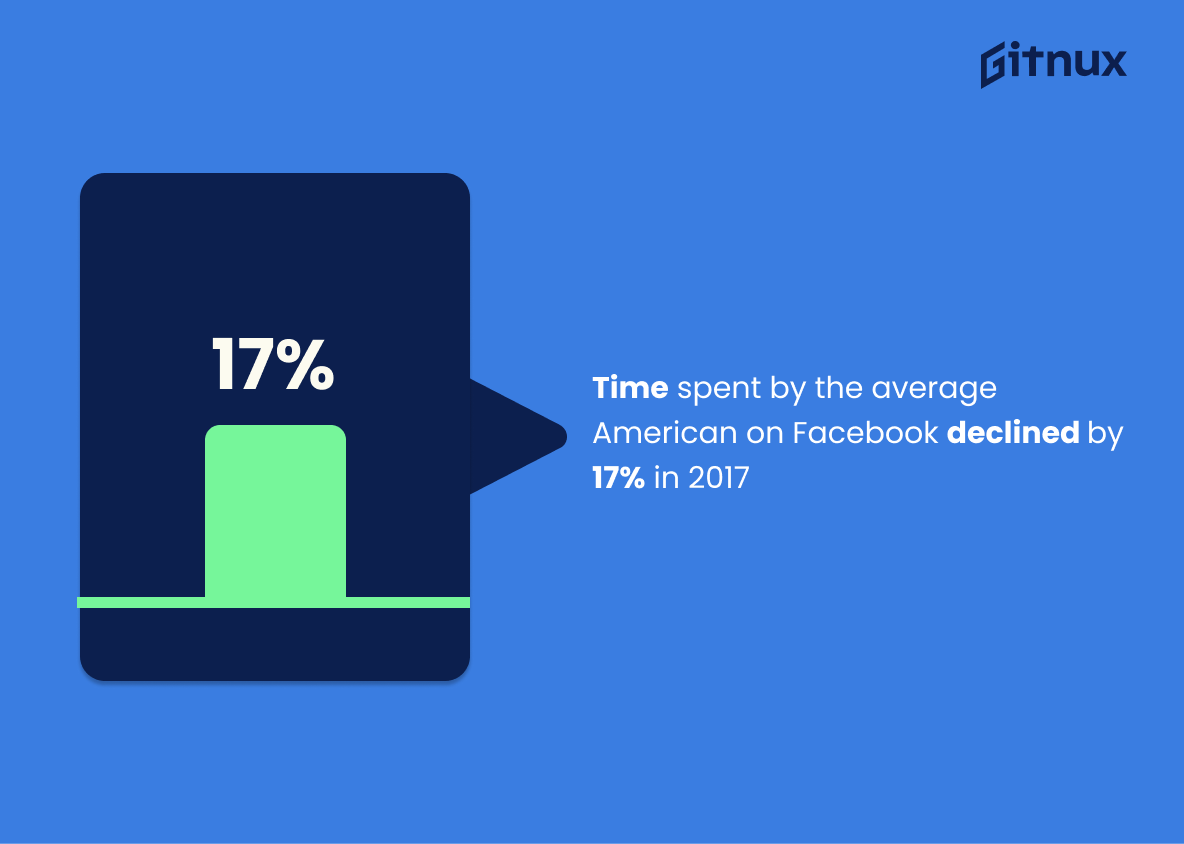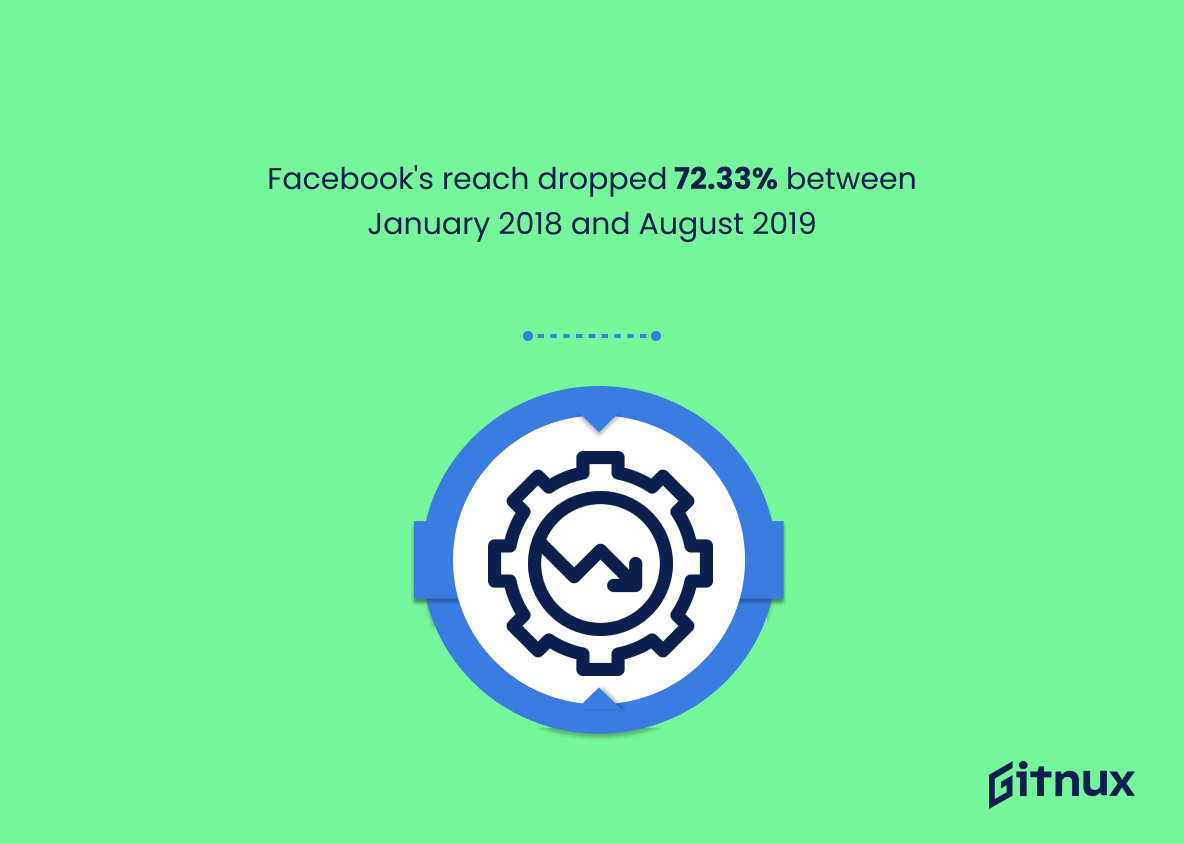Facebook has seen a steady decline in its user base over the past few years. In 2018, Facebook lost 1 million users in Europe and experienced its first-ever drop in users (a 2.8% decline) in the UK that same year. Additionally, 42% of US Facebook users aged 18 to 29 self-reported reduced usage while 44% deleted the app from their phone altogether. As of 2020, only 51% of US teens use Facebook compared to 71%, four years prior; this is indicative of an overall downward trend for the platform’s user base across all age groups worldwide.
In 2019, daily active users grew by only 9%, marking its slowest growth rate ever recorded since it was founded 15 years ago – with a further decrease noted between 2017 and 2019 when 15 million people left the platform globally according to one report. Furthermore, eMarketer forecasts suggest that 2021 could see another 5%-6% dip among younger demographics within America alone as well as a 0.5 % reduction amongst Western Europeans during Q2 2020 – indicating an ongoing pattern which shows no signs yet of abating anytime soon
Facebook Decline Statistics Overview
42% of US Facebook users aged 18 to 29 self-reported reduced usage,
This statistic is significant in the context of Facebook Decline Statistics because it indicates that a large portion of the platform’s core demographic is beginning to distance themselves from the social media giant. This could be a sign of a larger trend of users leaving the platform, which could have a major impact on Facebook’s future.
44% of Facebook users aged 18 to 29 deleted the app from their phone,
This statistic is a telling indication of the waning popularity of Facebook among the younger demographic. It suggests that the social media platform is losing its appeal among the 18 to 29 age group, which is a key demographic for the company. This could be a sign of a larger trend of Facebook’s decline in the near future.
As of 2020, only 51% of US teens use Facebook, a decline from 71% in 2014,
This statistic is a telling sign of the changing times; it demonstrates that the popularity of Facebook among US teens has significantly decreased over the past six years. This is an important piece of information to consider when discussing the decline of Facebook, as it provides a clear indication of the platform’s waning appeal.
In 2019, Facebook’s daily active users grew only 9%, marking its slowest growth in years,
This statistic is a telling sign of Facebook’s decline, as it indicates that the platform’s daily active user growth has slowed to its lowest rate in years. This is a worrying trend for the social media giant, as it suggests that the platform may be losing its appeal to users. This could have serious implications for Facebook’s future, as it could lead to a decrease in revenue and a decrease in market share.
In 2020, Facebook’s usage among internet users in the US declined to 62.3% from 65.3% in 2017,
This statistic is a telling indication of the waning popularity of Facebook among internet users in the US. It serves as a stark reminder that the social media giant is no longer the undisputed leader in the industry, and that its user base is shrinking. This is an important piece of information for anyone writing a blog post about Facebook decline statistics, as it provides a concrete example of the platform’s diminishing influence.
Facebook experienced its first-ever drop in users (a 2.8% decline) in the UK in 2021,
This statistic is a telling sign of the times, as it indicates that Facebook’s popularity is waning in the UK. It is a stark reminder that the social media giant is not immune to the changing tides of public opinion, and that its user base is not as secure as it once was. This statistic is a valuable insight into the current state of the platform, and is an important piece of information to consider when discussing the decline of Facebook.
In 2017, Facebook’s daily usage in the US and Canada dropped by 1% for the first time,
This statistic is a telling sign of the times, as it marks the first time in Facebook’s history that daily usage in the US and Canada has dropped. It serves as a stark reminder that even the most powerful social media platform is not immune to the changing tides of public opinion and usage. This statistic is a clear indication that Facebook’s decline is real and that it is something that should be taken seriously.
In 2017, Facebook’s daily active users in the US and Canada decreased by 50,000 for the first time ever,
This statistic is a stark reminder of the potential decline of Facebook’s user base in the US and Canada. It serves as a warning sign that the social media giant may be losing its grip on the market, and that other platforms may be gaining traction. This could have serious implications for businesses that rely on Facebook for marketing and advertising, as well as for the overall health of the platform.
In 2017, Facebook saw a decline of 7% in engagements on business pages,
This statistic is significant in the context of blog post about Facebook Decline Statistics as it provides a tangible example of the decline in engagements on business pages. It serves as a concrete illustration of the downward trend in user engagement, and provides a benchmark for further analysis.
Facebook’s daily engagement rate fell 6.7% in 2018, continuing the decline,
This statistic is a telling sign of the times, highlighting the fact that Facebook’s daily engagement rate is on the decline. It serves as a stark reminder that the social media giant is not immune to the changing tides of the digital landscape, and that its users are increasingly turning away from the platform. This statistic is a key indicator of the overall trend of Facebook’s decline, and is an important piece of the puzzle when it comes to understanding the full scope of the situation.
In 2021, Facebook’s market share among social networks in the US dropped to 50.8% from 54.3% in 2019,
This statistic is a telling sign of the decline of Facebook’s influence in the US social media market. It shows that the platform’s market share has dropped significantly in the past two years, indicating that users are increasingly turning away from the platform. This is an important piece of information for anyone looking to understand the current state of Facebook’s popularity and its future prospects.
Time spent by the average American on Facebook declined by 17% in 2017,
This statistic is a telling sign of the changing tides in the world of social media. It indicates that the average American is spending less time on Facebook, which could be a sign of waning interest in the platform. This could be a sign of a larger trend of people turning away from Facebook and towards other social media outlets. This statistic is an important piece of evidence in understanding the decline of Facebook’s popularity.
Facebook’s reach dropped 72.33% between January 2018 and August 2019,
This statistic is a stark reminder of the decline of Facebook’s reach over the past year and a half. It serves as a powerful illustration of the waning influence of the social media giant, and is an important piece of evidence to consider when discussing the decline of Facebook.
According to an eMarketer forecast, US Facebook users aged 12 to 17 and 18 to 24 could decline by 5.6% and 5.8% in 2021, respectively,
This statistic is a telling sign of the times, as it indicates that the two age groups most likely to use Facebook are beginning to move away from the platform. This could be a sign of a larger trend of younger generations turning away from the social media giant, and it could have serious implications for the future of Facebook.
Conclusion
The statistics presented in this blog post paint a clear picture of Facebook’s decline. In the US and Canada, user base declined for the first time ever in 2018, while usage among teens dropped from 71% to 51%. Globally, an estimated 15 million users left between 2017 and 2019. Daily active users grew only 9%, marking its slowest growth in years.
Engagement rate fell 6.7% in 2018 with reach dropping 72.33%. According to eMarketer forecasts, US Facebook users aged 12-17 and 18-24 could decline by 5.6% and 5.8%, respectively, this year alone – further evidence that Facebook is losing ground as other social networks gain traction worldwide
References
0. – https://www.forbes.com
1. – https://www.emarketer.com
2. – https://www.buzzsumo.com
3. – https://www.techcrunch.com
4. – https://www.businessinsider.com
5. – https://www.wired.com
6. – https://www.revealbot.com
7. – https://www.thedrum.com
8. – https://www.pewresearch.org
9. – https://www.brandwatch.com
10. – https://www.thedigitalmarketinginstitute.org
11. – https://www.agorapulse.com
12. – https://www.motherjones.com
13. – https://www.seomonitor.com
ZipDo, cited June 2023: Facebook Decline Statistics

